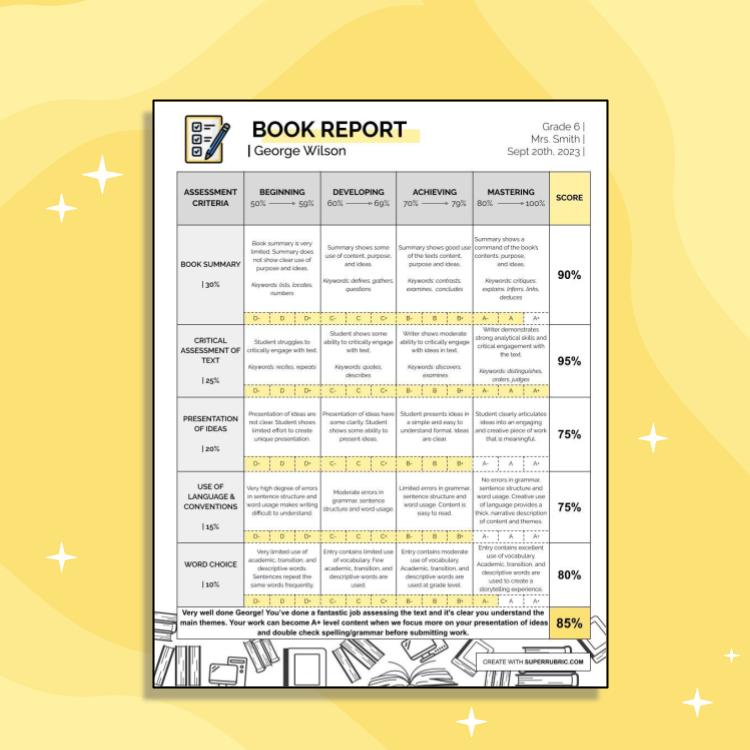

Book reports are among on of the most common types of assignments in language arts. From an assessment standpoint, you can look at students reading fluency, reading comprehension, use of vocabulary. You might even be able to look at their ability to connect ideas if you choose to use other assessments like a discussion forum rubric.
A simple way to ensure that students are making the most of their reading is to pre-provide the rubric to them. After all, the tricky part about using a book report in class is assessing student ability.
Our sample studies have shown that students who are pre-provided with rubrics before they are involved in an assignment score 14-17% higher than those who went in blind.
As teachers, we can’t forget that a large portion of student success comes down to students truly understanding how they are being assessed. Fortunately for you, SUPERRUBRICs are simple to use and extremely easy to understand. Let’s break down how you can use a book report rubric maker to save valuable teaching time while improving student outcomes.

All great rubrics have set criteria that help breakdown the assignment. Our book report rubric maker breaks assesses students in five key criteria.
30% of the students score on their rubric will be based on their ability to comprehend the key ideas. Summarizing chapters and/or the entire book is a valuable skill that will require the student to infer, explain, and critique.
20% of their score will be based on their ability to distinguish ideas and characters, while also examine the essential elements of the story. Students should ask themselves; Who were the main characters? What are the themes in this story?
Can the student – in written of verbal feedback, explain to you the main concepts of the story? Students who can articulate their ideas and/or draw connections to real-life scenarios are exceeding expectations.
Does the student use specific vocabulary to enhance the reading experience? Are the sentences and structure of the report free from grammatical errors?
This skill is often not seen by teachers as a priority. What we want to see in students is the ability to read a new story and use the words they learned in their response. The students ability to source descriptive, academic, and transition words will help to reinforce storytelling experience and a high-level writing ability.